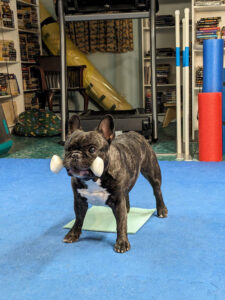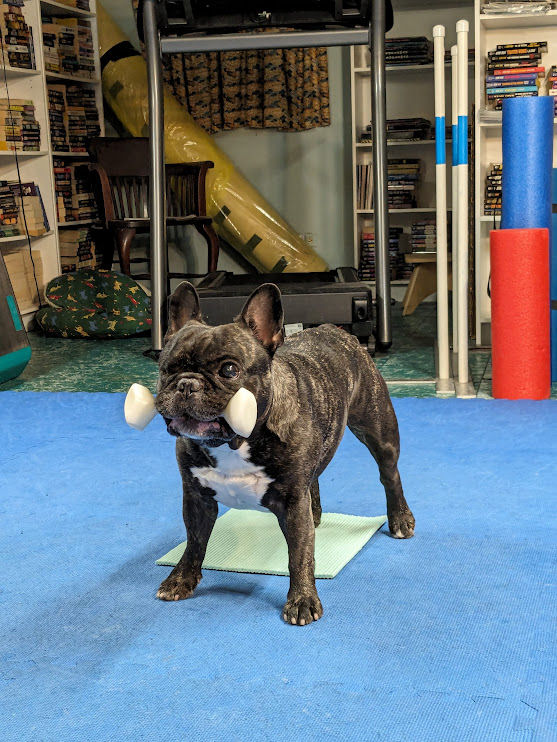The two qualities needed for successful dog training are patience and consistency. Good dog training isn’t fun to watch. That’s why lots of the dog trainers with huge numbers of views on social media are really awful trainers. Awful meaning violent, punishment-based, and full of noise and motion.
When one of our videos gets some traction on social media, one of the comments that pops up over and over is “can you do a video showing how to teach this?”
We could. But no one wants to watch somebody standing around looking at their dog. That’s what most of positive reinforcement training is. We’re teaching our dogs to think and make good decisions. We don’t tell them what to do, we present opportunities for them to try things and figure stuff out.
Patience and consistency

Say you want to teach your dog to pick up an object – anything from the required-in-obedience dumbbell to a can of beer. Training starts with you putting the object in front of your dog and standing there staring at it. You wait for any interaction with the object (look, sniff, poke, move, lick) and when it happens, mark it (either with a click or a “Yes!”) and reward close to the object.
A couple of interactions with the object could be all you get the first time you show it to your dog. It takes time for your dog to realize the object has value. So that video is you standing there looking at your dog maybe looking at a thing. Not great video, but a good first step.
Short attention span
In this age of instant everything, advocating slow and steady is, at best, an outlier. That’s why your training sessions should be short. Hence, 2-Minute-Trainer. Staring at an object for two minutes while your dog thinks is okay. Longer than that? Deadly dull. And unproductive.
Even active behaviors, like loose-leash walking, start with “nothing to see here.” First you teach your dog the basics of the game. Lots of treats for not much motion. Thinking is active, difficult, and intense. But not exciting to watch.
That’s why we write detailed descriptions of our dog training games. It only takes a second to read “Choose a three-word phrase. Say the third word five times, giving your dog a treat as you say the word.” Doing it, and having your dog love hearing the word, takes a bit of time. Doing it with your dog is fun. Watching someone else do it isn’t.
Patience pays
You and your dog can do any of the behaviors and tricks we show in our videos. Some tricks only take moments for dogs to learn, especially if it’s based on something they already know. Some of the tricks take weeks, or even months. The total time working on it may be less than half an hour, but that’s two minutes at a time, maybe once a week.
If a dog trainer promises fast results, it’s almost guaranteed to be punishment-based training. Yes, it’s faster. Yes, it works, sort of. Punishment-based training doesn’t change the dog’s behavior, it suppresses it. The classic example is the housebreaking scenario where the dog is punished for pooping when you find the poop. So they hide where they do it. They didn’t learn what you meant to teach. They learned to avoid punishment.
Great results
Patience and consistency will get you and your dog wherever you want to go. Sometimes the goal changes based on what you learn about your dog with your training games. You’ll probably lean into the things your dog really enjoys and learns quickly. The stuff neither of you truly cares about will be shuffled off to the side.
You’ll know your dog better and you’ll have a bigger, happier life together when you play training games. And we hope you’ll send us the links to your end-product videos. Those are lots of fun to watch.

